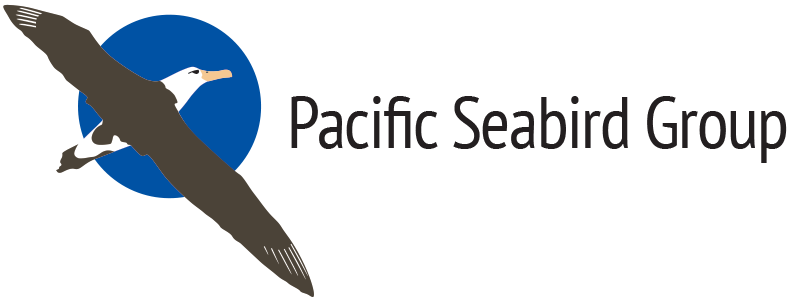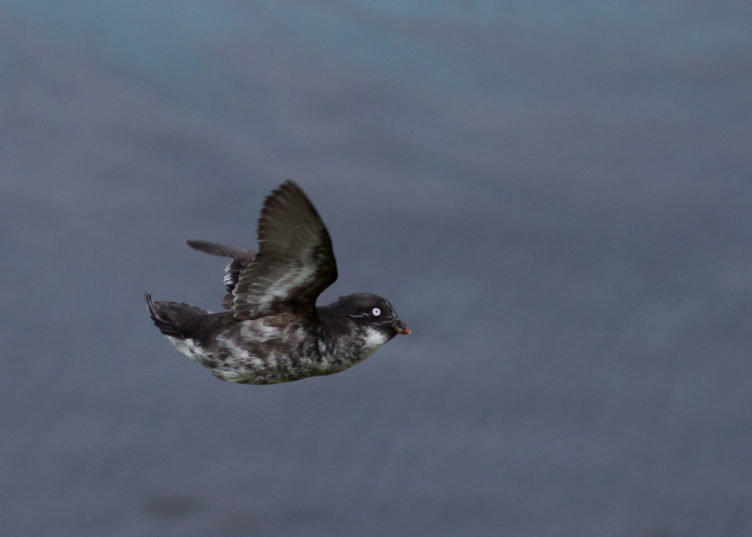Paid Field/Research Assistant: Wildlife Research Technician (CA)
Catalina Island Conservancy, jointly with California Institute of Environmental Studies, is seeking one (1) Wildlife Research Technician to contribute to wildlife conservation projects alongside CIC staff. Hiring will begin immediately, and applications will be reviewed on a rolling basis until the position is filled. Deadline to apply: March 1, 2025!
Agency/Organization: California Institute of Environmental Studies/Catalina Island Conservancy
Location: Santa Catalina Island, California
Website: Click here
Job Description: Catalina Island Conservancy, jointly with California Institute of Environmental Studies, is seeking one (1) Wildlife Research Technician to contribute to wildlife conservation projects alongside CIC staff. Hiring will begin immediately, and applications will be reviewed on a rolling basis until the position is filled.
Santa Catalina Island is one of the southern Channel Islands and is located 30 miles off the coast of Southern California. It’s known for its wildlife, dive sites, and Mt. Orizaba, its highest peak. Catalina Island Conservancy, founded in 1972 as a nonprofit organization, is one of the oldest private land trusts in Southern California. It protects 88 percent of Catalina Island, including more than 62 miles of unspoiled beaches and secluded coves, the longest publicly accessible stretch of undeveloped coastline left in Southern California. Catalina Island is home to more than 60 plant, animal, and insect species found nowhere else in the world.
Position Overview: The wildlife research technician will work extensively with the Conservancy wildlife biologists to conduct a diverse set of wildlife surveys and management objectives across the island. The technician will be hired and employed by the California Institute of Environmental Studies (Davis, CA and Ventura, CA; ciesresearch.org), a non-profit research and restoration organization contracted by Catalina Island Conservancy.
This position will alternate focus each week between primarily seabird monitoring one week and other wildlife tasks/projects with CIC staff the other week. The technician will get a chance to work extensively with the Scripps’s Murrelet, a small seabird that persists in the California Current system in the Pacific Ocean. Seabird monitoring will involve nest searching and monitoring, night-time spotlight surveys on the water, camera trap deployment, and data management. In addition to Scripps’s Murrelets, the technician will also monitor a mainly Leach’s Storm-petrel breeding colony during the second half of the season.
The research technician will also work with island foxes. This work will include mortality assessments, radio telemetry, and data management/analysis techniques. The technician will also receive training on a variety of survey techniques including (but not limited to): shrew monitoring using remote cameras, anuran surveys, deer spotlight surveys, and acoustic monitoring of bats and land birds using remote audio detection devices. In addition, the technician will be trained in driving 4WD vehicles on very rough roads, assist in occasional ESRI ArcGIS use and assist in cataloging a backlog of approximately 50 years of data.
Responsibilities include:
- Operating a Zodiac Mk. II, an outboard-motor vessel to conduct seabird surveys.
- Night-time spotlight surveys for Scripps’s Murrelets.
- Nest searching and monitoring for Scripp’s Murrelets on loose, rocky terrain/scree/talus near cliff faces and steep coastline.
- Deploy remote camera traps and sort resulting photos by species. Manage acoustic breeding bird audio and habitat datasets.
- Assist with the vehicle and aerial telemetry for VHF-collared Catalina Island foxes for survival estimates.
- Assist Conservancy biologists with locating radio-collared foxes using telemetry techniques.
- Investigate island fox mortalities.
- Enter and/or manage data and generate summaries or reports into project databases.
- Perform assigned administrative (e.g., scheduling, correspondence, filing, purchasing, billing) and logistical (e.g., vehicle and equipment maintenance) tasks.
- Digitize and organize Conservation-related files in filing cabinets.
- Conduct literature reviews which may include gathering data and reports.
- Perform other duties as needed or assigned. Management reserves the right to assign and re-assign work at its discretion.
Schedule: The typical schedule is five 8-hour days a week though schedules may vary as needed. A four-day 10-hour schedule may be necessary for more remote work. Weekend work and split shifts will be required occasionally, particularly for nighttime wildlife surveys.
Provided Training/Orientation: The Conservancy will provide position-specific training as well as interpretative tours, talks, presentations, or other similar development opportunities to enhance the experience for the technician. Conservancy staff will identify appropriate learning opportunities pertaining to the Island’s natural and cultural history and allow time for the technician to learn the ecological significance of the project to be performed. The specific training technicians receive will be determined by the season of service. Training may include, but not be limited to, an in-depth education on wildlife species and management including research techniques and tools and use of GIS/GPS equipment for navigational and data collection purposes.
Environmental Conditions/Hazards: Technician may encounter environmental conditions/hazards including extreme heat or cold, rocky terrain, swamp or wetland conditions, variable ocean conditions, biting insects, and potentially dangerous wildlife. The technician is expected to conduct duties in a safe and orderly manner so as not to endanger themself, fellow staff members, or resources.
Vehicle and Equipment Use/Safety: If a vehicle is required for the accomplishment of the duties, one will be provided by the CIC. Any tools required for the accomplishment of the duties will be provided by the CIC. Use of personal protective equipment (PPE), typically provided by the CIC, will be mandatory for any activity that requires it. Strict adherence to CIC equipment training, certification, and safety protocols is required.
Qualifications:
Required:
- Willing and able to represent the conservancy in a professional, positive, and enthusiastic manner.
- Ability to be both self-directed/work alone, and be a positive, contributing member of a group.
- A valid driver’s license and an insurable driving record (documentation to be provided upon request).
- Willing to undergo and must pass the required criminal history checks.
- Ability to perform the essential duties of the position with or without reasonable accommodation.
Preferred:
- Competitive applicants for this position can hold a B.S. in wildlife, natural resources, or related fields and/or have relevant experience in subject areas such as writing, research, and office administration experience.
- Knowledge and understanding of wildlife research techniques.
- Experience with outboard-motor watercraft.
- Comfortable performing surveys and collecting data while on the water.
- Knowledge of and the ability and willingness to perform backcountry hikes and navigate steep terrain in temperatures over 90 degrees Fahrenheit.
- Knowledge of and the willingness to operate VHF telemetry.
- Ability and willingness to identify wildlife on Santa Catalina Island including birds, mammals, and invertebrates.
- Ability and willingness to effectively communicate with people of all ages and backgrounds with the ability and willingness to work alone or in a group setting.
- Deep interest in being a part of a high-functioning and cohesive team working towards a common goal.
Physical Demands:
- Requires frequent sitting, standing, walking, hiking, carrying, using hands to handle or feel, reaching with hands and arms, talking, and hearing. Manual dexterity is required for the use of various tools. Required to stoop, kneel, climb, and/or crouch. Ability to hike over rough terrain. The ability to swim is also required for this position.
- Weight Lifted or Force Exerted: Ability to move up to 50 pounds.
- Environmental: Outdoor conditions. Work environment conditions can change frequently; working under adverse weather conditions and in various climates.
Wage: This position comes with an hourly pay rate of $21.85 for an average 40-hour work week. Additionally, this position receives a $30 island per diem to be received for each working day on the island. Housing is provided at no cost for the duration of the term on Santa Catalina Island.
To apply: Please submit your resume, a cover letter demonstrating your interest and experience, and contact information for 3 professional references to both jcdachenhaus@gmail.com (Jon Dachenhaus, CIES) and KElder@catalinaconservancy.org (Katie Elder, CIC) with “CIC Wildlife Research Tech 2025” as the subject.
Application Deadline: Hiring will begin immediately, and applications will be reviewed on a rolling basis until the position is filled. Deadline to apply: March 1, 2025.
Start Date: Late February/Early March 2025 (flexible for the right candidates). 22 weeks after the start date (with potential opportunities for extension). 22 -week minimum commitment is required.
Contact: Jon Dachenhaus (jcdachenhaus@gmail.com, kelder@catalinaconservancy.org)






